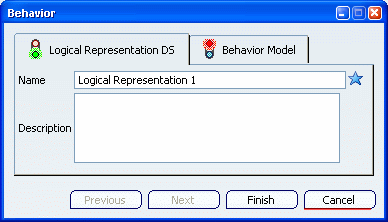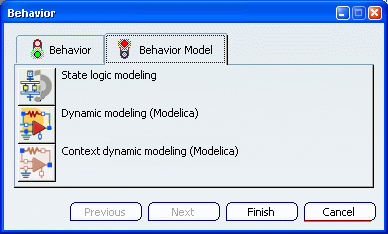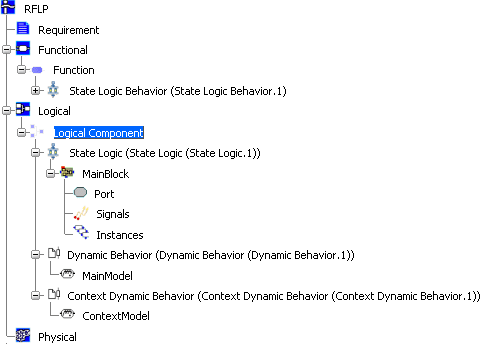Select Insert a Logical Behavior from the Behaviors toolbar.
from the Behaviors toolbar.
From the RFLP structure tree or from the 2D graph representation,
select a logical component.
The Behavior dialog box
appears.

From the Logical Representation DS tab, enter a name for the behavior.
In the Description field, type a short description text.
This description will appear after the behavior name in the RFLP
structure tree.
Open the Behavior Model tab to select a modeling type.

Click Finish to close the dialog box.
The behavior representation is created under the selected logical component.

It contains a node (MainBlock, MainModel or ContextModel) that represents the behavior.
Also note that a behavior icon is inserted in the 2D representation of the logical
component (at the
bottom right).

To edit the behavior within its
workbench, you have two possibilities:
- Double-click the logical behavior representation from the RFLP structure tree (or its child node).
- Double-click the behavior icon from the 2D representation.